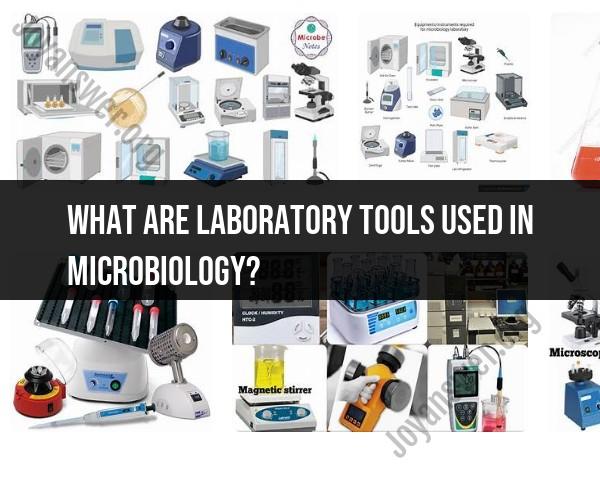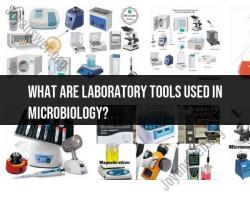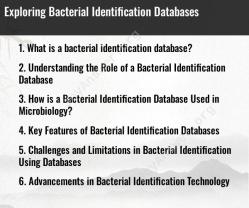What are laboratory tools used in microbiology?
Microbiology laboratories use a variety of specialized tools and equipment to study microorganisms, including bacteria, viruses, fungi, and parasites. These tools are essential for conducting experiments, performing analyses, and cultivating microorganisms. Here is an overview of some key laboratory tools used in microbiology and their functions:
Microscopes:
- Types: Light microscopes, electron microscopes.
- Functions: Microscopes are fundamental for observing and studying microorganisms. They magnify specimens, allowing researchers to visualize the morphological characteristics and structures of microorganisms.
Incubators:
- Functions: Incubators provide a controlled environment for the cultivation of microorganisms. They maintain optimal temperature, humidity, and sometimes carbon dioxide levels to promote the growth of cultures.
Autoclaves:
- Functions: Autoclaves are used for sterilizing equipment, media, and other materials. They use steam and high pressure to eliminate bacteria, spores, and other contaminants.
Bunsen Burners:
- Functions: Bunsen burners provide a controlled flame for sterilizing equipment such as inoculating loops and needles. They are also used for flame sterilization of the necks of culture tubes.
Microbiological Incinerators:
- Functions: Incinerators are used to burn and sterilize waste generated in the microbiology laboratory, including used culture plates, contaminated materials, and disposable items.
Centrifuges:
- Functions: Centrifuges spin samples at high speeds to separate components based on their density. In microbiology, centrifuges are used for cell pelleting, separating cellular components, and isolating DNA, RNA, or proteins.
Laminar Flow Hoods:
- Functions: Laminar flow hoods provide a sterile workspace by directing filtered air over the work surface. They are used for handling materials in aseptic conditions to avoid contamination.
Pipettes and Micropipettes:
- Functions: Pipettes and micropipettes are used for accurate and precise measurement and transfer of liquids. They are essential for preparing culture media, transferring samples, and conducting various assays.
Petri Dishes:
- Functions: Petri dishes are shallow, round, and lidded containers used for culturing microorganisms on solid media. They provide a large surface area for the growth and observation of colonies.
Inoculating Loops and Needles:
- Functions: Inoculating loops and needles are used for transferring microorganisms from one location to another. They are flame-sterilized before each use to prevent cross-contamination.
Microbiological Safety Cabinets:
- Functions: Safety cabinets provide a contained and sterile workspace, protecting researchers and samples from contamination. They are commonly used for handling hazardous microorganisms.
pH Meters:
- Functions: pH meters measure the acidity or alkalinity of solutions. Maintaining the proper pH is crucial for microbial growth and various microbiological processes.
Thermocyclers (PCR Machines):
- Functions: Thermocyclers are used in molecular biology for polymerase chain reaction (PCR). They enable the amplification of DNA, allowing researchers to study and manipulate genetic material.
Refrigerators and Freezers:
- Functions: Refrigerators and freezers are used for storing culture media, reagents, and biological samples at specific temperatures to maintain their viability.
These are just a few examples of the many tools and equipment used in microbiology laboratories. The choice of tools depends on the specific research or diagnostic needs of the laboratory and the microorganisms being studied.
Essential laboratory tools utilized in microbiology
Microbiologists delve into the microscopic world, unraveling the secrets of unseen life forms. Their laboratory is an arsenal of specialized tools, each vital for studying the fascinating realm of microorganisms. Here are some of the most essential laboratory tools used in microbiology:
- Microscopes are the gateway to the microbial world. Microscopes, like compound microscopes and electron microscopes, magnify organisms, revealing their intricate structures and cellular details.
- Petri dishes are shallow, covered dishes that provide a sterile haven for culturing microorganisms. Different types support various growth conditions, allowing researchers to study diverse microbes.
- Agar plates are solid, jelly-like media that serve as microbial cafeterias. Nutrients within the agar nourish growing cultures, enabling observation and experimentation.
- Inoculating loops and needles are tiny, sterile tools that transfer microorganisms from one location to another.
- Incubators are controlled-environment chambers that mimic optimal growth conditions for microorganisms.
- Centrifuges are spinning machines that separate different components within a liquid mixture. They can isolate bacteria from culture media or purify viruses for further analysis.
- Stains and dyes are chemical solutions that color specific structures within microorganisms, enhancing their visibility under the microscope and revealing internal features for identification and differentiation.
How do these laboratory tools aid microbiologists in their research?
These laboratory tools go beyond mere observation. They enable microbiologists to:
- Isolate and identify unknown microbes.
- Quantify the number of microbes present in a sample.
- Perform biochemical analysis to understand the metabolic processes of microbes.
- Perform genetic analysis to unlock the secrets of microbial genomes.
- Test antimicrobials to develop new treatments for infectious diseases.
Technological advancements in microbiology
Microbiology is constantly evolving alongside advancements in technology. Some game-changers in microbiology include:
- DNA sequencing technologies have revolutionized the study of microbes. Next-generation sequencing rapidly decodes vast amounts of DNA, unraveling microbial diversity and unlocking insights into their interactions with humans and the environment.
- Microfluidic devices are tiny channels that manipulate minute amounts of fluids. They enable precise analysis of individual cells or even single molecules.
- Mass spectrometry is a technique that identifies and characterizes molecules based on their mass and charge. It provides detailed information about the composition of microbial samples.
- Computational tools are powerful software that analyzes vast amounts of biological data. They help identify patterns, predict microbial behavior, and design new experiments.
Conclusion
Microbiology is a rapidly growing field that is making significant contributions to our understanding of the world around us. The laboratory tools described above are essential for microbiologists to conduct their research and make new discoveries.




